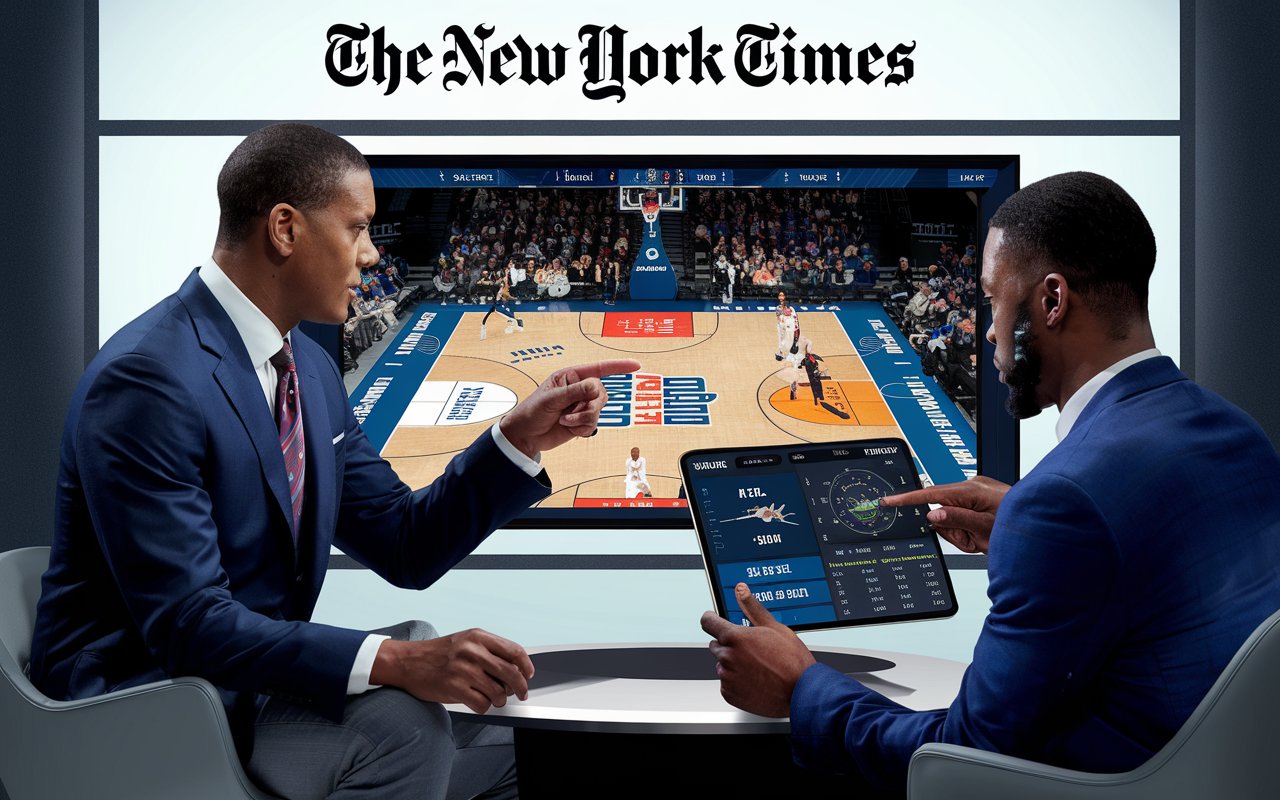
Fodder for a Sports Wonk NYT: The Practical Advice
For those who are passionate about sports, statistical analysis, and data-driven insights, the New York Times has become a reliable source for in-depth sports coverage. Whether it’s game-by-game analysis or an exploration of broader sports trends, the term “fodder for a sports wonk NYT” refers to the rich, detailed content that fuels discussions among sports analysts, fans, and professionals alike.
In this article, we will explore how this wealth of information from the New York Times serves as essential material for those deeply engaged with sports. We’ll delve into how the data, stories, and trends covered in the NYT can be applied to a variety of sports-related pursuits, from casual fan engagement to serious analysis. Let’s also explore how to harness this information effectively, providing practical advice for sports enthusiasts, analysts, and industry professionals.
What Does “Fodder for a Sports Wonk” Mean?
Breaking Down the Term
The word “wonk” is often used to describe someone who is extremely knowledgeable or obsessed with a particular subject, often in a data-driven or highly detailed manner. In this case, a “sports wonk” is someone who dives deep into the numbers, trends, and minutiae of the sports world. For such individuals, the New York Times provides ample material to feed this obsession.
“Fodder” refers to raw material that can be consumed, used, or analyzed. In the context of sports, this means the facts, figures, statistics, interviews, and expert opinions that provide the foundation for meaningful sports discussions or analytical work.
NYT’s Role in Supplying the Fodder
The New York Times, with its extensive sports section, provides coverage that goes beyond superficial reporting. It offers detailed statistical breakdowns, in-depth player profiles, and coverage of off-the-field issues like sports management, economics, and the intersection of sports with culture and politics. For a sports wonk, this is essential reading, offering both the data and the context needed to analyze the latest trends or historical patterns in sports.
Why the New York Times is a Goldmine for Sports Wonks
Comprehensive Data and Statistics
One of the most significant assets for a sports wonk is access to detailed statistics. The New York Times is renowned for presenting extensive data in an easily digestible format. Whether you’re following baseball, football, basketball, or soccer, you’ll find a rich pool of statistics that can be used to assess performance trends, compare players, or evaluate teams over time.
For example, the NYT’s baseball coverage often delves into advanced metrics like WAR (Wins Above Replacement) or OBP (On-Base Percentage), offering material not just for casual fans but for those deeply engaged in the intricacies of the game.
Historical Context and Trends
Another way the New York Times caters to sports wonks is by offering historical context in their reporting. It’s not uncommon to find articles that compare today’s athletes with legends from the past or explore how rule changes in a sport have influenced gameplay over the decades.
For a sports wonk, this historical data is not just interesting; it’s invaluable. The ability to trace trends over time, whether in scoring, defensive strategies, or athlete conditioning, adds a layer of depth to any sports analysis.
Expert Opinions and Analysis
Fodder for a sports wonk NYT isn’t just about numbers; it’s also about expert insights. The New York Times has a strong team of seasoned sports journalists and analysts who provide their take on the latest developments in the sports world. Their opinions are grounded in both observation and research, often bringing new angles or overlooked details to light.
By reading these expert opinions, sports enthusiasts and professionals can develop their perspectives and engage in deeper, more nuanced discussions.
Practical Ways to Use NYT Sports Insights
For Fantasy Sports Enthusiasts
For those who are involved in fantasy sports, whether it’s football, baseball, or basketball, the deep dives provided by the New York Times can give you an edge in your league. Analyzing advanced statistics like player efficiency ratings or projected game outcomes can help you make informed decisions when drafting players, trading, or setting your weekly lineup.
By consistently following NYT sports coverage, fantasy players can stay on top of player trends, injury reports, and emerging stars, making it easier to predict which players will outperform expectations.
For Sports Writers and Content Creators
If you’re a sports writer, blogger, or content creator, the New York Times is a treasure trove of material. Not only does it provide you with up-to-date information and insights, but it also serves as a model for high-quality journalism.
By studying NYT articles, you can learn how to structure your own pieces, whether you’re writing game recaps, player profiles, or opinion articles. Their blend of data, historical context, and expert commentary is something that can be emulated in your own work to provide value to your readers.
For Coaches and Analysts
For sports professionals, including coaches and analysts, NYT’s coverage is more than just casual reading—it can inform game strategy. Whether it’s understanding how certain defensive strategies have evolved in the NFL or analyzing changes in NBA offensive playbooks, the in-depth articles provide practical insights that can be applied in real-world scenarios.
Coaches and sports analysts can use this information to develop better strategies, assess upcoming opponents, or even rethink training methodologies based on emerging trends.
For Casual Fans Looking to Deepen Their Understanding
Even if you’re not a professional or a sports wonk by trade, the New York Times offers a wealth of information that can enhance your understanding and enjoyment of sports. If you’ve ever watched a game and wondered why a certain play was executed or how a specific rule works, NYT’s detailed explanations and articles can provide clarity.
Casual fans can benefit from the same expert insights and in-depth analysis that professionals use, allowing them to follow along more closely with the action, whether it’s live games or discussions with friends and colleagues.
How to Maximize Your Experience with NYT Sports Coverage
Stay Consistent
One of the best ways to get the most out of NYT sports coverage is to follow it regularly. By keeping up with both day-to-day developments and larger trends, you can build a solid base of knowledge that will help you understand new developments more deeply.
Use Data and Visuals
Many NYT sports articles come with charts, graphs, and other visual aids that make it easier to digest large amounts of data. Whether you’re analyzing team stats, player comparisons, or league trends, these visuals can make complex information more understandable. Don’t just skim over them—use them as tools for deeper analysis.
Engage in Discussions
Whether on social media or in sports forums, engaging in discussions with fellow sports wonks can enrich your understanding. Use NYT articles as a basis for these discussions, bringing in new insights or challenging others’ views with solid data and expert-backed analysis.
Conclusion
“Fodder for a sports wonk NYT” is more than just a phrase—it encapsulates the rich, detailed content that the New York Times provides to those who are passionate about sports. Whether you’re a professional analyst, a fantasy sports enthusiast, or simply someone who enjoys diving deep into the world of sports, the NYT offers a comprehensive and engaging resource that can enhance your knowledge and enjoyment of the game.
By harnessing the data, trends, and expert opinions featured in their articles, you can become a more informed and insightful sports fan or professional. So, keep reading, analyzing, and discussing—there’s always more to learn!

